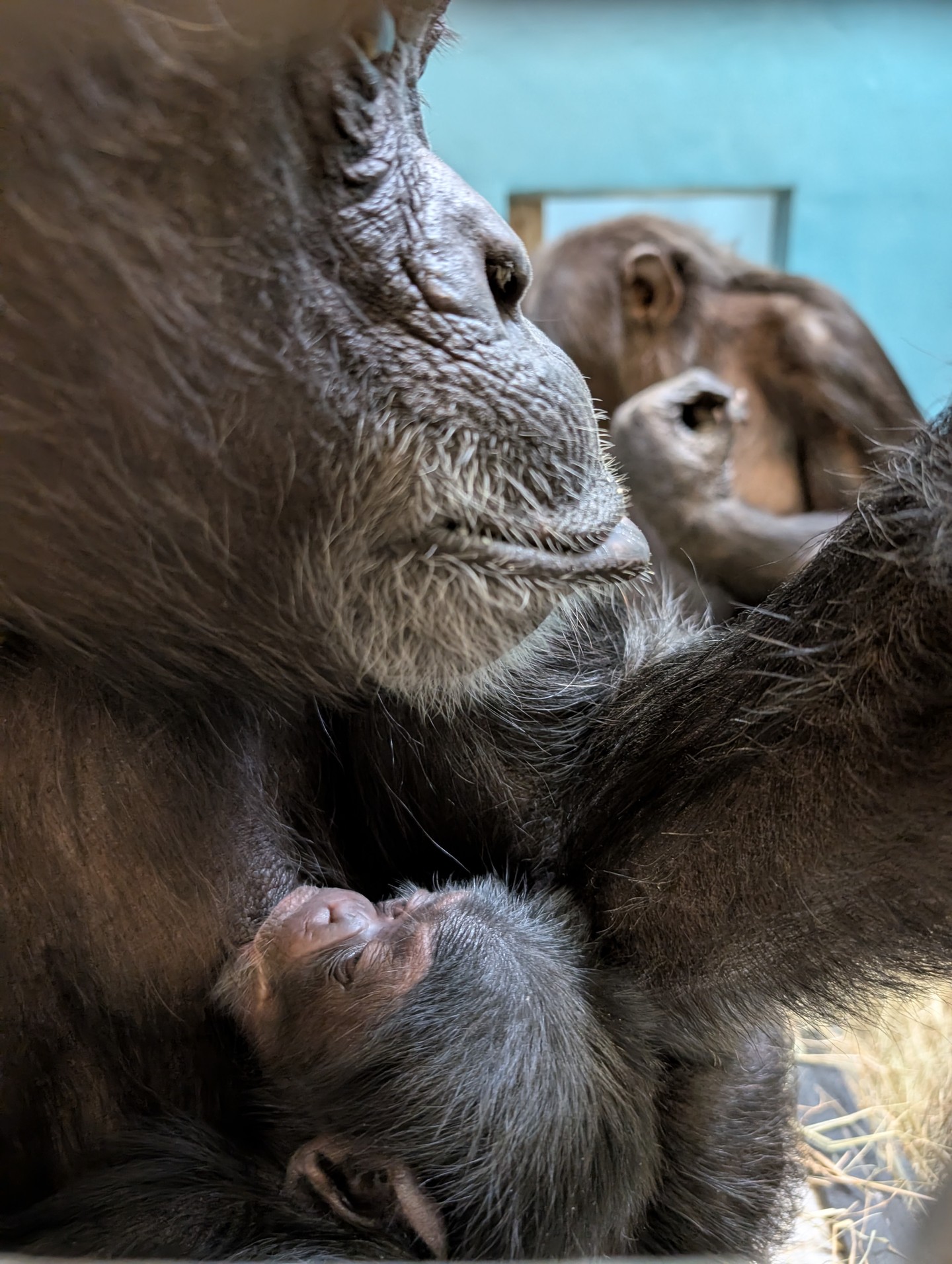- Introduction to the birth of the chimp and its significance.
- The biology and development of chimpanzees.
- The role of zoos in conservation and education.
- The impact of this birth on conservation efforts.
- The responsibilities of zoo management in animal welfare.
Chimpanzees, our closest genetic relatives, offer invaluable insights into the natural world. The recent birth of the tiniest chimp to mom Amelia has sparked widespread excitement and delight. Captured beautifully by Michelle F., this moment speaks volumes about the vitality and importance of conservation efforts. Understanding why this birth is significant requires an exploration of chimpanzee biology, the functions of zoological institutions, and the broader implications for conservation.
Chimpanzees are a keystone species in their natural habitats, playing an essential role in maintaining ecological balance. Their intellectual capabilities and social structures mirror those of human beings, providing a fascinating window into evolutionary dynamics. The birth of a new chimpanzee is more than a charming occurrence—it’s a critical addition to a population that faces numerous threats, including habitat loss and poaching.
The biology of chimpanzees is complex and compelling. They share about 98% of their DNA with humans, which allows researchers to study genetic links and differences. This newest tiny arrival begins its life being entirely dependent on its mother, Amelia, who will nurture and protect her infant closely. In the wild, young chimpanzees rely on their mothers for food and learning for several years. Observing these behaviors in a controlled environment like a zoo can yield critical knowledge about their natural instincts, social interactions, and developmental milestones.
Chimpanzee infants are typically born with a strong grasp reflex, allowing them to cling to their mothers. As they grow, they learn through play and observation, a process similar to human learning. These early interactions are vital for cognitive and social development, influencing the chimpanzee’s ability to interact with its environment and community. By studying this development, zoo staff can better contribute to the species’ conservation efforts.
The role of zoos in conservation and education is multifaceted. Modern zoos prioritize not only entertainment but also serve as centers for learning and preservation. They often participate in global breeding programs designed to maintain genetic diversity and ensure the survival of endangered species. The birth of this tiny chimpanzee represents success within these breeding initiatives, reflecting a commitment to maintaining healthy populations.
Zoos are crucial for raising public awareness about the plight of endangered species like chimpanzees. They provide a tangible connection for visitors who might otherwise never encounter these creatures. Educational programs in zoos encourage the public to support conservation campaigns and advocate for policies that protect natural habitats. This engagement is essential for fostering a culture of conservation that extends beyond the zoo walls.
Conservation efforts benefit greatly from successful births like that of Amelia’s offspring. With the continuous threats faced by chimpanzees in the wild, every new life is a victory. Habitat destruction, illegal wildlife trade, and diseases like Ebola severely impact populations. Zoos, therefore, become sanctuaries where animals are safeguarded from these threats, ensuring the continuation of their genetic legacy. As these institutions collaborate across nations, they form an integral part of a global movement aimed at preserving biodiversity.
Zoo management carries significant responsibilities to maintain the well-being of their inhabitants. Ensuring that animals like the newborn chimpanzee thrive involves meticulous planning and execution. This includes providing suitable habitats that mimic natural environments, developing dietary plans that meet nutritional needs, and conducting regular health assessments. It is imperative that zoos adhere to ethical standards, focusing on welfare and not just conservation goals.
Moreover, zoo staff are often involved in scientific research that furthers understanding of animal behavior, genetics, and care techniques. By contributing to a body of knowledge, they enhance both in-situ and ex-situ conservation strategies. The presence of infant chimpanzees like Amelia’s offspring provides unique opportunities for observational studies that can inform future conservation policies and educational curricula.
In conclusion, the birth of the tiniest chimpanzee to mom Amelia is a beacon of hope amid the challenges faced by the species. It serves as a testament to the dedication and hard work of conservationists, researchers, and zoo staff worldwide. As we continue to document and learn from these animals, it becomes increasingly clear that their survival is intertwined with our own responsibility to safeguard the planet’s biodiversity. By visiting zoos, supporting conservation initiatives, and raising public awareness, we can contribute to a future where both humans and chimpanzees thrive together.
*****
Source Description
Cuteness alert! 🚨 Here’s a closer look at our tiniest chimp, born to mom Amelia earlier this month.
📸: Michelle F.


